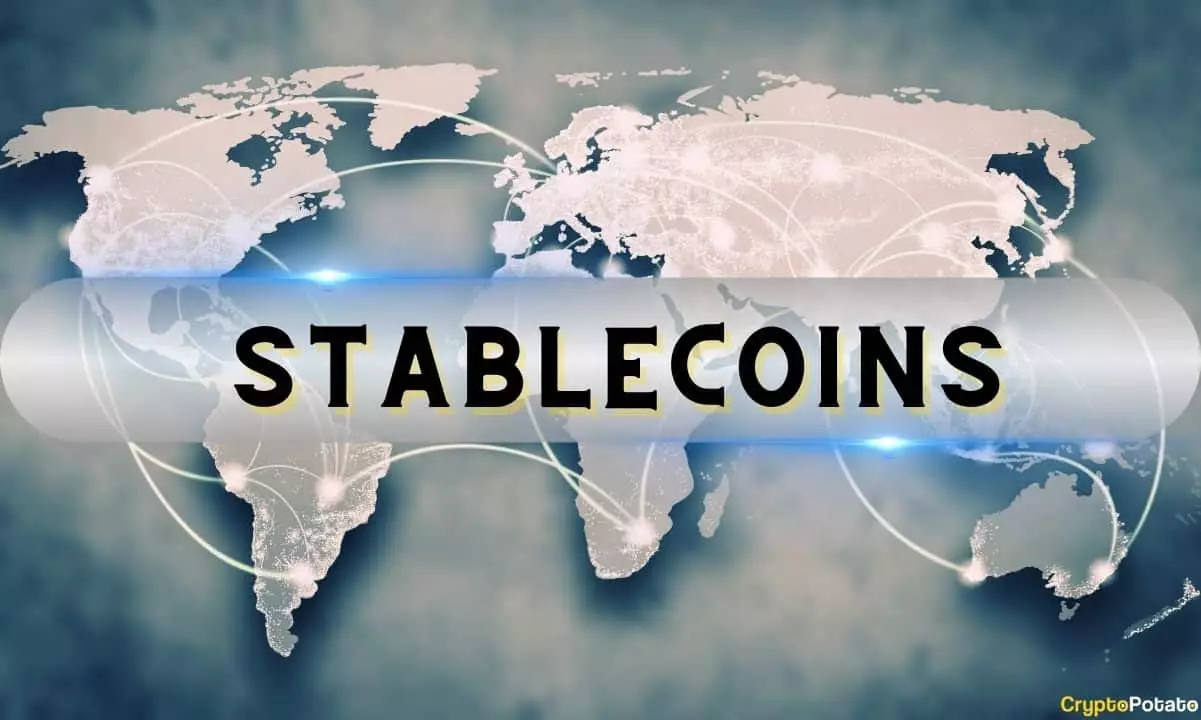The cryptocurrency landscape has recently witnessed an extraordinary surge in the fiat-backed stablecoin market, with a staggering 76% increase from 2024 to 2025, adding over $97 billion to reach an unprecedented $224.9 billion. However, amid this financial fervor, the reality is more complex and perhaps less rosy than the numbers suggest. While USDT (Tether) and USDC (USD Coin) dominate, collectively accounting for an overwhelming 93.5% of the circulating supply, newcomers like Ethena’s USDtb and Usual’s USD0 have garnered attention but remain mere blips on the radar. This raises a crucial question: what does their success say about the health and inclusivity of the overall market?
The traditional finance (TradFi) sector has clearly stumbled in its foray into the stablecoin arena. Notably, PayPal’s PYUSD and Société Générale’s EURCV have failed to gain the traction one might expect given their significant brand recognition and regulatory approval. The stark reality is that despite the backing of well-established financial institutions, their uptake has been sluggish at best. The dichotomy between crypto-native players and traditional financial bodies exposes fundamental issues with customer trust and the evolving nature of financial assets. It’s indicative of a wider narrative: while the world of decentralized assets surges forward, TradFi seems out of touch and, frankly, outclassed. This underperformance is more than just an anomaly; it’s a canary in the coal mine illustrating how entrenched traditional practices often struggle to adapt to innovative paradigms.
The Commodity-Backed Tokens: A Glimmer of Hope?
Commodity-backed tokens have also seen some movement, enjoying a 67.8% increase, albeit from a much smaller base. The class added $773.9 million, reaching a market cap of $1.9 billion. However, before we break out the champagne, it’s crucial to contextualize this growth—the percentage makes it evident that this market remains a minor player, constituting only 0.8% of the total value of fiat-backed stablecoins. Attractive, yes, but hardly the player one should bet the farm on. Tether Gold (XAUT) and PAX Gold (PAXG) are leading this niche market, yet even with an ongoing rise in gold prices, the overall expansion is sluggish.
It’s ironic that demand for these asset-backed tokens stayed relatively flat while their market values appreciated, signaling that much of the growth stemmed from price increases rather than an influx of new users or wider adoption. This should be a wake-up call for those viewing commodities as a viable alternative to fiat-backed stablecoins; the illusion of stability is precarious, amplified perhaps by fleeting trends rather than robust market fundamentals.
A New Contender: Tokenized Treasuries
In stark contrast, the tokenized treasury market has achieved astonishing growth, establishing itself as the powerhouse of real-world assets (RWAs) with a whopping 544.8% increase to a total market cap of $5.6 billion just a year. Such impressive figures beckon attention, confirming that despite their challenges, assets tied to government securities have considerable allure in times of economic uncertainty. As trade tariffs introduced by the U.S. in March 2025 sent investors scrambling to safer havens, tokenized treasuries swiftly absorbed $2.3 billion in value. Clearly, their strong showing isn’t merely due to innovative execution, but rather as a reflection of shifting investor sentiment amidst turbulent financial conditions—a phenomenon that may not easily be replicated in more stable climates.
At the forefront of this explosion is BlackRock’s BUIDL token, which has commanded an impressive 44% of the market share, a level of dominance that begs for scrutiny. Though Ethereum holds strong as the primary blockchain utilized for issuing these assets, with Stellar trailing, the narrow distribution across merely 11,000 on-chain addresses indicates an unsustainable foundation. Should tokenized treasuries expand but the user base remain confined, the long-term viability of these assets may become questionable.
As exuberance surrounds growing sectors in the cryptocurrency and tokenization space, one must remain alert to the structural inequalities and operational challenges that linger beneath the surface. The bright lights of progress obscure many of the darker shadows lurking in the corners, driving home the point that the burgeoning digital financial ecosystem is far from infallible or equitable.















Leave a Reply